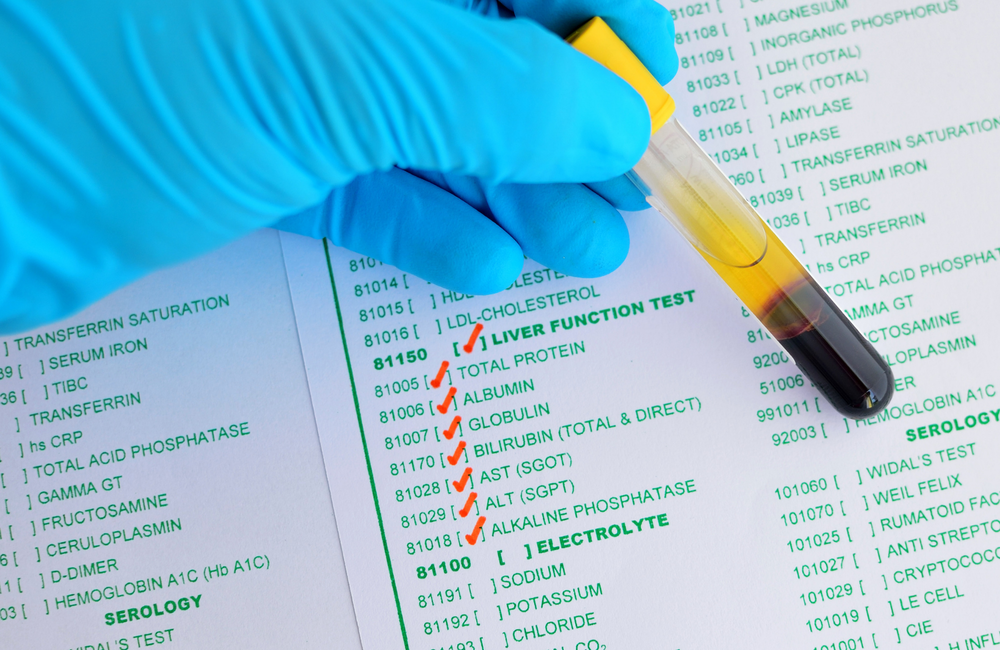
Key points
- High levels of bilirubin in the body can be a side-effect of the anti-HIV drug atazanavir.
- It can make the skin or eyes more yellow, but is not otherwise harmful.
- Changing HIV treatment may be an option.
Bilirubin is a waste product produced by the liver during the breakdown of old red blood cells. The technical term for abnormally high levels of bilirubin is hyperbilirubinaemia. If levels of bilirubin increase this can cause jaundice – yellowing of the skin and whites of the eyes.
Bilirubin normally leaves the body in stools (poo). If the liver cannot properly dispose of old red blood cells, they build up in the body.
Levels of bilirubin can become elevated and cause jaundice in people taking the protease inhibitor atazanavir (Reyataz). Atazanavir is a protease inhibitor, and one of the preferred third drugs in a treatment combination, together with two nucleoside reverse transcriptase inhibitors (NRTIs). It is often used in combination with ritonavir as a boosting agent, but is also available in a co-formulation with cobicistat used as an alternative boosting agent (Evotaz).
A slight yellowing of the skin and the whites of the eyes is a recognised common side-effect of atazanavir. If you notice this happening, make sure you mention this to your doctor at your next appointment. Hyperbilirubinaemia caused by atazanavir does not damage the liver and is not dangerous, but it can be distressing.
However, if your skin or eyes turn yellow, and you also feel sick, vomit, have diarrhoea, pain in the liver area or feel generally unwell you should see a doctor immediately. These are signs of hepatitis, which needs immediate monitoring and treatment.
When does hyperbilirubinaemia develop in people taking protease inhibitors?
Bilirubin levels increase significantly in many people taking atazanavir during the first few weeks of treatment with the drug. However, this does not always lead to the development of jaundice. Hyperbilirubinaemia is a side-effect of long-term use of indinavir (Crixivan, a protease inhibitor now rarely used in the UK).
How many people taking atazanavir will develop hyperbilirubinaemia?
Between a third and half of people taking atazanavir will develop hyperbilirubinaemia. There are some genetic variations that may make it more likely for some people to develop high bilirubin levels (including a condition called Gilbert’s syndrome).
Hyperbilirubinaemia is more likely to develop in people who are taking the form of atazanavir boosted with ritonavir. It seems to be more common in adolescents taking atazanavir than in adults. Young people may find the visible yellowing effect of the hyperbilirubinaemia particularly distressing and should be encouraged to raise it with their healthcare team.
It doesn’t appear to be more common in people with hepatitis, another condition affecting the health of the liver, but anyone with liver dysfunction should be closely monitored for bilirubin levels while they are on atazanavir.
Monitoring
As part of your routine HIV care, you should have regular blood tests to monitor your liver function. These can be used to check the level of bilirubin in your blood. If you notice your skin yellowing then bring it to your doctor's attention at your next appointment. Your doctor should investigate other potential causes if you have this symptom or raised bilirubin levels.
Jaundice can also be a symptom of hepatitis A, B, and C, or liver damage caused by medicines, alcohol, or recreational drugs. If jaundice is caused by liver disease or damage it is likely to be accompanied by other symptoms including pale stools and dark urine, vomiting, diarrhoea, fevers and tiredness.
Should I be worried if I develop hyperbilirubinaemia?
Hyperbilirubinaemia caused by atazanavir is not dangerous and does not damage the liver.
However, it is wise to contact your doctor if you do develop jaundice so you can have tests to rule out other, potentially dangerous, causes.
How is hyperbilirubinaemia treated?
If you have elevated levels of bilirubin in the blood without jaundice then one option is to do nothing. You will not become ill because of hyperbilirubinaemia and developing it does not mean that your anti-HIV drugs aren't working.
However, jaundice affects your appearance and can be distressing and because of this you may want to do something about it.
It is not recommended that you reduce your dose of atazanavir to reduce bilirubin levels. The safest way to treat jaundice caused by hyperbilirubinaemia if you are taking atazanavir is to change your treatment to another protease inhibitor or non-nucleoside reverse transcriptase inhibitor (provided that you have other treatment options available to you). It is an accepted reason for changing HIV treatment and you should feel able to talk to your healthcare team about taking this step.
